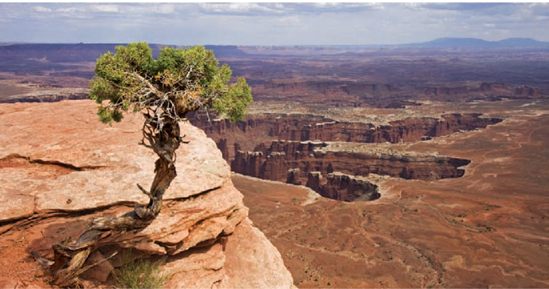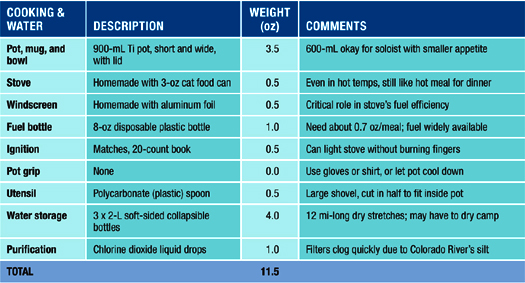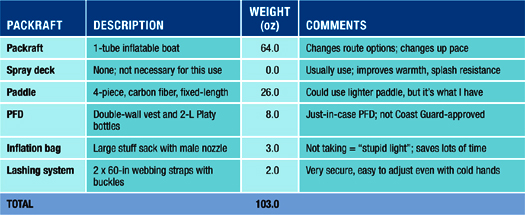

If I wish to go hiking between the months of November and May, when my beloved mountain West is still buried in snow, I head to the Southwest’s arid valleys, basins, and steppes. I especially enjoy the Colorado Plateau, which is scattered with textbook-quality geological features and amazing canyons, notably the Grand Canyon. The Southwest is generally a friendly backcountry locale—it’s warm, bug-free, and sunny—but it can also be dangerously hot, bone dry, and shadeless.
After a long winter on Colorado’s Front Range, my friends and I are tired of skiing. We agree to spend the three-day Memorial Day weekend backpacking in Canyonlands National Park near Moab, Utah. We identify an ambitious loop through the Needles and Maze districts that includes a short Class I packraft float on the Colorado River.
Our route has an exciting mix of trail, off-trail, and river components.
Temperatures. Historical averages range from 50° to 85°F, with extremes of 30° and 100°F. When we check the five-day forecast before leaving Denver, we see that temperatures will be above average. It will be difficult for us to acclimate to this heat because it’s been a cold and wet spring in Colorado. Source: NOAA
Precipitation. The five-day forecast says there is only a 10 percent chance of precipitation.
Daylight. Civil twilight starts at around 5:30 a.m. and ends at around 9:00 p.m., giving us 15.5 hours of daylight total.
Ground cover. We scan Landsat images using Google Maps. Our route is mostly over rock. The topographical maps indicate that the creek bottoms are sandy.
Vegetation. Online photos and the Landsat images reveal scant vegetation.
Sun exposure. Significant. Clouds will be nonexistent, and the sun will be high in the sky; our route is 4,000 to 5,000 feet above sea level. Sun exposure will be significant.
Water availability. Very limited. There are only two reliable water sources on our route—the Colorado River and Big Water Spring. Source: National Park Service
Wildlife & insects. It is wise to keep an eye out for snakes and scorpions, especially in the mornings and evenings when they are most active.
Remoteness. At our route’s turnaround point, we are about 25 miles from the entrance station.
Natural hazards. The Colorado River is swollen with spring runoff and is unsafe to swim at this time of year. Instead, we opt to bring packrafts.




